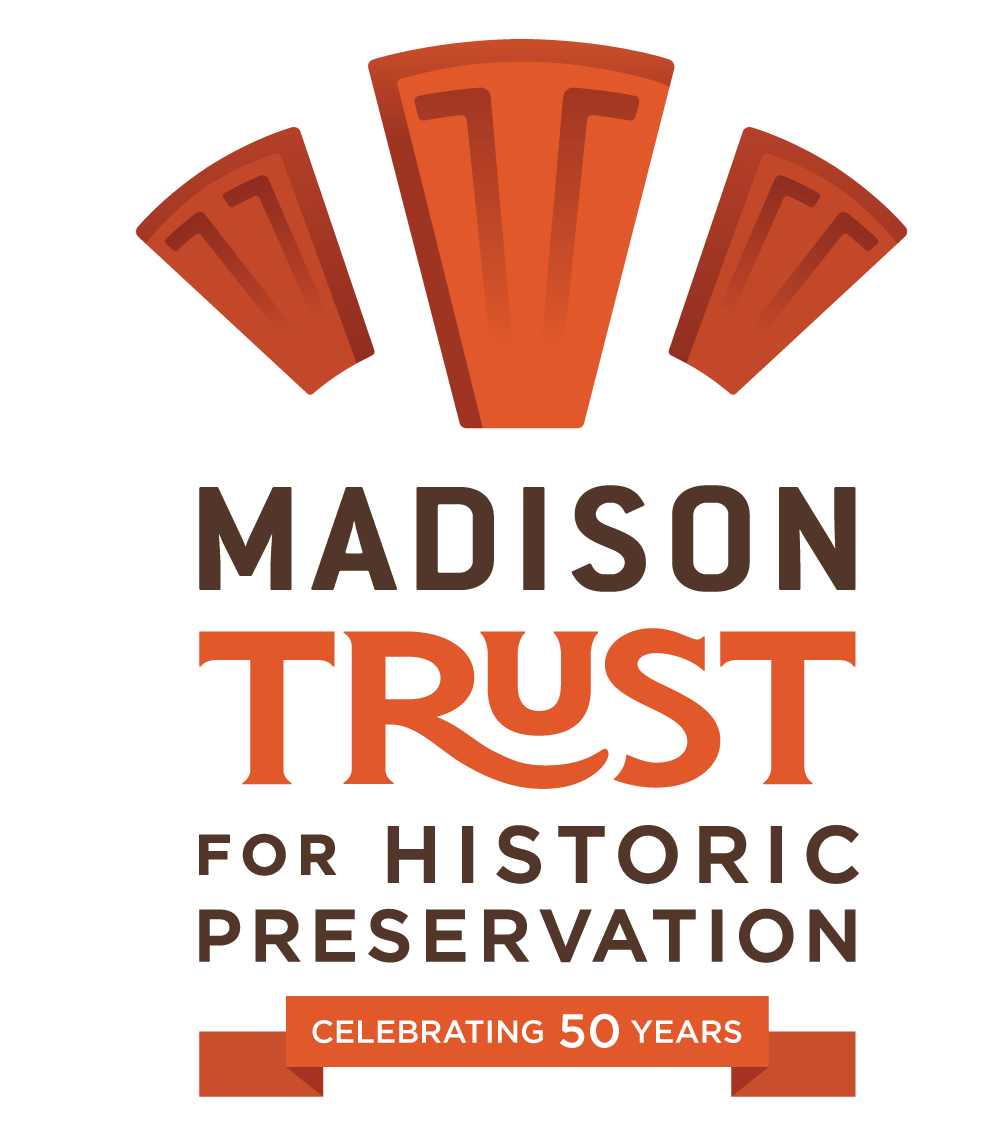Close to Home
by Michael Bridgeman
I’m happy to travel for architecture. I’m also content to find treasures close to home. Traveling far from home is not a requirement for finding places and things that are interesting, pleasurable, and illuminating. I find it worthwhile to look at what is at hand as long as I acknowledge the limitations that present themselves.
This came to mind (again) when I looked at my recent piece about Spanish Revival influences seen in Madison and Dane County. This month I look at two sub-styles I set aside last time as “exceedingly rare” to see what they can tell us.
A Monterey house in Madison [1]
Monterey
When I wrote that Monterey houses are “exceedingly rare” in the Madison area it was based on my search of the Wisconsin Historical Society’s Architecture and History Inventory (AHI). There are only five such houses in Wisconsin in a database that numbers 157,133 records. So, I was surprised when I came upon a Monterey house at 802 Blue Ridge Parkway, a cul-de-sac on Madison’s west side. It has the most important feature of the style: a long, cantilevered balcony at the second story that is sheltered by the main roof. This house’s generally Colonial look makes sense given that Monterey “is a free interpretation of the Anglo-influenced Spanish Colonial houses of northern California,” according to field guide author Virginia Savage McAlester. [a] She dates Montereys from 1925 to 1955 and notes that they are most often found in California and Texas. The Madison example dates to 1971, causing an architectural historian I spoke with to call the porch “a Monterey holdover,” mixed with 1960s Contemporary and Colonial Revival.
The Parsons House in Wausau [2]
Among the Monterey houses in the AHI is the Channing and Cornelia Parsons House at 1215 Highland Park Boulevard in Wausau. It has the requisite cantilevered porch under the main roof of the house. It also has wood shingles which is common for the style, as are ceramic tile roofs. The decorative ironwork on the balcony—seen here and on the Madison house—makes this a variant sometimes called “Creole French.”
Pueblo Revival
Taos Pueblo in New Mexico [3]
This style is unique in having precedents in traditional dwellings built by the indigenous Pueblo People of what is now the American southwest. Taos Pueblo has been occupied for more than a millennium. The Pueblo Revival style combines elements of Native American pueblos with Spanish Colonial buildings. The revival emerged around 1910 and is still employed, especially in California, Arizona, and New Mexico. The city of Santa Fe, for example, began encouraging new development in “Santa Fe Style” beginning soon after New Mexico became a state in 1912. La Fonda Hotel, which dates to 1922, is a quintessential example of the type.
Pedro’s Restaurant [4]
A search for “Pueblo” in the AHI yields only six results, none of which is a strong specimen. A rare example in Madison is Pedro’s Restaurant at 3555 East Washington Avenue, which is not in the AHI database. It has several characteristics of the style: the stucco-like exterior walls, the rounded corners on the parapet, the decorative “beams” that project from the façade to imply vigas, and the flat roofline. The many arches hint at Spanish Colonial influence, so Pedro’s might be better called Pueblo-Spanish Revival. [b]
A Taco Bell in Wausau in 2009 [5]
American capitalism has never been shy about exploiting and manipulating architectural motifs for commercial purposes. In many places the most visible embodiment of Spanish Revival design was the early version of the Taco Bell restaurant, such as the outlet in Wausau. The elliptical arches and faux adobe bricks [c] are a nod to Spanish influence. The campanario [d] and its bell takes us back to the Mission style, America’s first widespread Spanish Revival style.
I hadn’t planned to write more about Spanish Revival influences in Madison, but decided I should tie up a couple of loose ends from my previous post. It also gives me a chance to emphasize a fundamental idea: that looking locally is worthwhile. Looking close to home can be satisfying in itself and it can be a catalyst—an entry point to further exploration by visiting a site, reading a book, or surfing the Web.
- - -
Notes
[a] McAlester, Virginia Savage. A Field Guide to American Houses (revised). Alfred A. Knopf, New York. 2015. p. 537. The Monterey and Pueblo Revival styles are described in her chapter on “Eclectic Houses.”
[b] The descriptor “Pueblo-Spanish Revival” is noted by McAlester (p.543).
[c] While Puebloans had been using adobe for thousands of years, the Spanish introduced bricks made of adobe. Cyril M. Harris, American Architecture, An Illustrated Encyclopedia. W.W. Norton & Company. New York, N.Y. 1998. p. 3.
[d] Campanario is a term I learned only recently, after writing last month’s post. I also learned that the shaped parapet on St. William Catholic Church in Paoli, which does not have a bell, is properly called an espadaña. See Harris, American Architecture, An Illustrated Encyclopedia.
Sources
Architecture and History Inventory (AHI). Wisconsin Historical Society. https://www.wisconsinhistory.org/Records/Article/CS15309
McAlester, Virginia Savage. A Field Guide to American Houses (revised). Alfred A. Knopf, New York. 2015. pp. 510-540. McAlester includes Mediterranean and Spanish styles among “Eclectic Houses.”
Image Credits
[1] Photo by Michael Bridgeman. 2024.
[2] Wisconsin Historical Society Architecture & History Index. AHI #236660. 2020.
[3] Photo by John Fyfe, CC BY-SA 4.0 <https://creativecommons.org/licenses/by-sa/4.0>, via Wikimedia Commons. 1992.
[4] Photo by Michael Bridgeman. 2024.
[5] Jonrev at English Wikipedia, CC BY 3.0 <https://creativecommons.org/licenses/by/3.0>, via Wikimedia Commons. 2009
